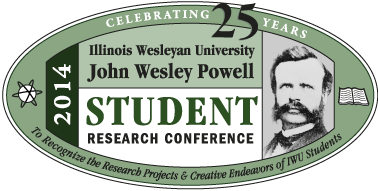Axonal Sprouting from Contralateral Cortex Following Mimicked Compensatory Rehabilitation After Stroke
Submission Type
Event
Expected Graduation Date
2014
Location
Center for Natural Sciences, Illinois Wesleyan University
Start Date
4-12-2014 2:00 PM
End Date
4-12-2014 3:00 PM
Disciplines
Psychology
Abstract
Rehabilitative strategies after stroke often fall short of the needs of stroke victims, such that they may be detrimental to recovery. For instance, compensatory training with the unaffected limb may lead to improved daily functioning, but may also prevent adequate recovery of the injured limb. We are looking into the anatomical mechanisms of compensatory rehabilitation using a rodent model of stroke. We mimicked compensatory training that is seen in rehabilitative therapies after stroke using C57BL/6 mice. These mice were trained on a skilled reaching task with their dominant limb before stroke was induced. After stroke, the mice received post-operative behavioral training that mimicked compensatory training. That is, mice were forced to use the non-dominant limb (i.e. good limb, contralateral to stroke, less-affected limb) during daily skilled reach training or no reach training (control). Mice that received good limb training had impaired functioning of the bad limb compared to controls that received no initial good limb training. This behavioral effect persisted with as many as 28 days of focused training of the bad limb. Mice were then sacrificed and their brain tissue was sliced and processed with immunohistochemical staining. Axonal proteins were targeted using anti-Pnf-h, and axonal growth inhibitory proteins were targeted with anti-Nogo-A. The number of axons crossing between hemispheres was quantified in the corpus callosum along with the number of axons surrounding the lesion. Growth inhibitory proteins were quantified around the lesion.
Axonal Sprouting from Contralateral Cortex Following Mimicked Compensatory Rehabilitation After Stroke
Center for Natural Sciences, Illinois Wesleyan University
Rehabilitative strategies after stroke often fall short of the needs of stroke victims, such that they may be detrimental to recovery. For instance, compensatory training with the unaffected limb may lead to improved daily functioning, but may also prevent adequate recovery of the injured limb. We are looking into the anatomical mechanisms of compensatory rehabilitation using a rodent model of stroke. We mimicked compensatory training that is seen in rehabilitative therapies after stroke using C57BL/6 mice. These mice were trained on a skilled reaching task with their dominant limb before stroke was induced. After stroke, the mice received post-operative behavioral training that mimicked compensatory training. That is, mice were forced to use the non-dominant limb (i.e. good limb, contralateral to stroke, less-affected limb) during daily skilled reach training or no reach training (control). Mice that received good limb training had impaired functioning of the bad limb compared to controls that received no initial good limb training. This behavioral effect persisted with as many as 28 days of focused training of the bad limb. Mice were then sacrificed and their brain tissue was sliced and processed with immunohistochemical staining. Axonal proteins were targeted using anti-Pnf-h, and axonal growth inhibitory proteins were targeted with anti-Nogo-A. The number of axons crossing between hemispheres was quantified in the corpus callosum along with the number of axons surrounding the lesion. Growth inhibitory proteins were quantified around the lesion.

